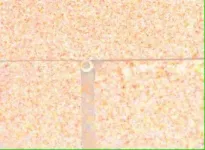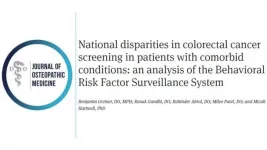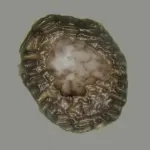(Press-News.org) CHAMPAIGN, Ill. --A new study found overlooked tsunami hazards related to undersea, near-shore strike-slip faults, especially for coastal cities adjacent to faults that traverse inland bays. Several areas around the world may fall into this category, including the San Francisco Bay area, Izmit Bay in Turkey and the Gulf of Al-Aqaba in Egypt.
The study led by University of Illinois Urbana-Champaign civil and environmental engineering professor Ahmed Elbanna and professor Ares Rosakis of the California Institute of Technology used the Blue Waters supercomputer at the National Center for Supercomputing Applications to model tsunami hazards related to strike-slip faults around the globe. The results are published in the Proceedings of the National Academy of Sciences.
"Whenever we saw large tsunamis triggered by earthquakes along strike-slip faults, people assumed that perhaps the earthquake had caused an undersea landslide, displacing water that way," Rosakis said.
The researchers said that a strike-slip fault exists when two blocks of rock on the fault line slide horizontally past one another. The San Andreas Fault is an example of a strike-slip fault.
In September 2018, a moderate 7.5 magnitude earthquake and unexpectedly powerful tsunami swept through Palu, a city situated on the inland side of Palu Bay on the Indonesian island of Sulawesi. The quake occurred along a northwest-southeast trending strike-slip fault that runs through the city and plunges below the bay along Palu's northwest shore.
"It looked like a bulldozer had come in and leveled the town," said co-author Costas Synolakis, the president of Athens College and a professor of civil engineering at the University of Southern California, who surveyed the area following the devastating event. "This is why it is so important that we try to understand what really happened."
Studies exploring connections between strike-slip faulting and tsunamis exist. However, they focus on specific fault systems or geographic locations, obscuring the complex details of the fault geometry and bathymetry, the study reports.
"What is unique about our study is that instead of considering a location-specific event, we focused on the fundamentals of a strike-slip fault system interacting within the boundaries of a narrow bay," Elbanna said. "We opted to simulate a very basic planar fault passing through a very simplified smooth-bottomed bay, similar to a bathtub. Having this simplified baseline model allows us to generalize to any place on the planet that may be at risk."
Intersonic earthquakes are fault ruptures that happen so quickly that their movement outpaces the seismic shear waves they generate - like a sonic boom, but with the shock wave moving through the earth's crust. The simulations found that intersonic earthquakes can provide enough energy and large enough horizontal displacements to trigger large tsunami waves.
When such earthquakes occur within a narrow bay, the researchers reported three distinct phases that can lead to a tsunami: the initial fault movement and shockwave causing almost instantaneous shaking of the coastal land; the displacement of water while the earthquake is occurring; and gravity-driven motion of the tsunami wave after the ground motion has subsided that carries the wave to shore.
Click here for a video explaining this motion.
"Each of these phases will have a different effect depending on the unique geography of the surrounding land and bathymetry of the bay," Elbanna said. "And, unlike the earthquakes and subsequent water displacement that occur many miles offshore, an earthquake and tsunami that occurs within the narrow confines of a bay will allow for very little warning time for the coast."
Elbanna compares the effect of horizontal strike-slip fault displacements to holding a water cup in your hand and shaking it horizontally.
"The sloshing motion is a result of the horizontal shaking. When an earthquake occurs along a strike-slip fault in a narrow bay, the horizontal ground motion pushes and pulls the boundaries of the bay leading to displacement of water in the vertical direction and initiation of the tsunami," he said.
Click here for a video explaining this motion.
"The physics-based model used in this study provides critical insight about the hazard associated with strike-slip faulting, particularly, the need to account for such risk to mitigate future damage to other bays traversed by strike-slip faults," said Illinois graduate student Mohamed Abdelmeguid, who conducted the simulations along with former graduate student Xiao Ma, currently a senior research scientist at Exxon Mobil.
The at-risk regions identified by the team - Northern California, Turkey and Egypt - have experienced intersonic earthquakes in the past, and the researchers recommend revisiting the tsunami hazard rating of underwater strike-slip faults, particularly those traversing narrow bays.
"It may not look like the tsunami scene from Dwayne Johnson's 'San Andreas' movie, but the tsunami risk for Northern California and several places worldwide need to be seriously revisited," Elbanna said.
INFORMATION:
Faisal Amlani of the University of Southern California and Harsha Bhat of Ecole Normale Superieure contributed to this study. Elbanna also is affiliated with NCSA and the Beckman Institute for Advanced Science and Technology.
The National Science Foundation, the Caltech Mechanical and Civil Engineering/Caltech Big Ideas Fund and the Caltech Terrestrial Hazard Observation and Reporting Center supported this research.
Click here to see more videos and information explaining this research.
Editor's notes:
To reach Ahmed Elbanna, call 217-300-4664; email elbanna2@illinois.edu.
The paper "Anatomy of strike-slip fault tsunami-genesis" is available from the U. of I. News Bureau. DOI: 10.1073/pnas.2025632118.
ALBUQUERQUE, N.M. -- Sometime between 50,000 and 70,000 years ago, prehistoric humans took their first steps into Sahul, an ancient landmass made up of modern Australia, New Guinea and Tasmania. But nobody knows which way they went after that.
"One of the really big unanswered questions of prehistory is how Australia was populated in the distant past. Scholars have debated it for at least 150 years," said Sandia National Laboratories archaeologist and remote sensing scientist Devin White.
Now, an international team of scientists using a Sandia supercomputer in the largest reconstruction ...
Palo Alto, CA--New work from a Stanford University-led team of researchers including Carnegie's Arthur Grossman and Tingting Xiang unravels a longstanding mystery about the relationship between form and function in the genetic material of a diverse group of algae called dinoflagellates.
Their findings, published in Nature Genetics, have implications for understanding genomic organizational principles of all organisms.
Dinoflagellates include more than 2,000 species of marine and freshwater plankton, many of which are photosynthetic, and some of which also ingest other organisms ...
MADISON -- From radio to television to the internet, telecommunications transmissions are simply information carried on light waves and converted to electrical signals.
Silicon-based fiber optics are currently the best structures for high-speed, long distance transmissions, but graphene -- an all-carbon, ultra-thin and adaptable material -- could improve performance even more.
In a study published April 16 in ACS Photonics, University of Wisconsin-Madison researchers fabricated graphene into the smallest ribbon structures to date using a method that makes scaling-up simple. In tests with these tiny ribbons, ...
SEATTLE--A new study of hospital deaths in the United States, published today in JAMA Network Open, is the most comprehensive look yet at changes in hospital mortality during the pandemic. Researchers analyzed data on more than 20,000 patients admitted to hospitals for COVID-19, over nine full months, from March to November of 2020. They found that rates of in-hospital mortality among COVID patients fell 38% between March and May, but there was little further decline through November 2020.
The researchers aimed to uncover the most likely cause of the ...
People have become accustomed to having their temperature checked during the pandemic because fever is a key indicator of COVID-19.
A new commentary by Washington State University College of Nursing Associate Professor Catherine Van Son and Clinical Assistant Professor Deborah Eti proposes that taking a temperature is a less useful indicator of infection in older adults and that a pulse oximeter be used instead.
The paper, published in Frontiers in Medicine, said baseline temperatures are lower in older adults. A lower baseline temperature means a fever may ...
Buildings - The mirage effect
A team of researchers at Oak Ridge National Laboratory has developed a method to detect and measure air leaking from a building's walls and roof that is quicker, cheaper and less disruptive to occupants.
Current air leak detection options, such as using a blower door and smoke or infrared thermography, are costly and invasive. ORNL's method is conducted from outside, using an imaging technique to visualize the flow of air leaks and calculate the volumetric flow of air based on the refraction effects imaged by cameras.
"Similar to a mirage over a black top road in the middle of summer, which looks fuzzy because ...
BURLINGTON, VT -- In the aftermath of George Floyd's 2020 murder by former police officer Derek Chauvin, many families may find themselves actively engaging in--or uncomfortably fumbling around--discussions about race. For white parents looking to clearly communicate antiracist ideologies with their preadolescent children, a new study offers some insight.
"There's a difference between saying race "shouldn't" matter and race "doesn't" matter," explains Jamie Abaied, professor of developmental psychology at the University of Vermont and lead author of the study, ...
CHICAGO--May 3, 2021-- Patients with one or more health conditions are more likely to be screened for colorectal cancer than those without comorbidities, according to new research in the Journal of Osteopathic Medicine. However, patients with five or more health conditions are also less likely to be screened than patients with two to four health conditions.
Colorectal cancer is the second leading cause of cancer death in the U.S. resulting in more than 53,000 deaths each year. Regular colorectal screenings, whether colonoscopy or at-home stool test, ...
Chestnut Hill, MA (5/3/2021) -- The billion-year-old fossil of an organism, exquisitely preserved in the Scottish Highlands, reveals features of multicellularity nearly 400 million years before the biological trait emerged in the first animals, according to a new report in the journal Current Biology by an international team of researchers, including Boston College paleobotanist Paul K. Strother.
The discovery could be the "missing link" in the evolution of animals, according to the team, which included scientists from the U.S., United Kingdom, and Australia. The microfossil, discovered at Loch Torridon, contains two distinct cell types and could be the earliest example of complex multicellularity ...
ITHACA, N.Y. - A new Cornell University-led study examines how temperature affects fishing behavior and catches among inland fisher households in Cambodia, with important implications for understanding climate change.
The research, which used household surveys, temperature data and statistical models, revealed that when temperatures rise, people fish less often. At the same time, the study's authors indirectly found that stocks of fish and other aquatic foods also rise with temperatures, leading to slightly larger catches each time peopled fished. Without careful analysis, it would appear that overall fish catches appear unchanged annually, when in fact, more nuanced dynamics are at play.
The study highlights why it's necessary when studying changing environmental ...



